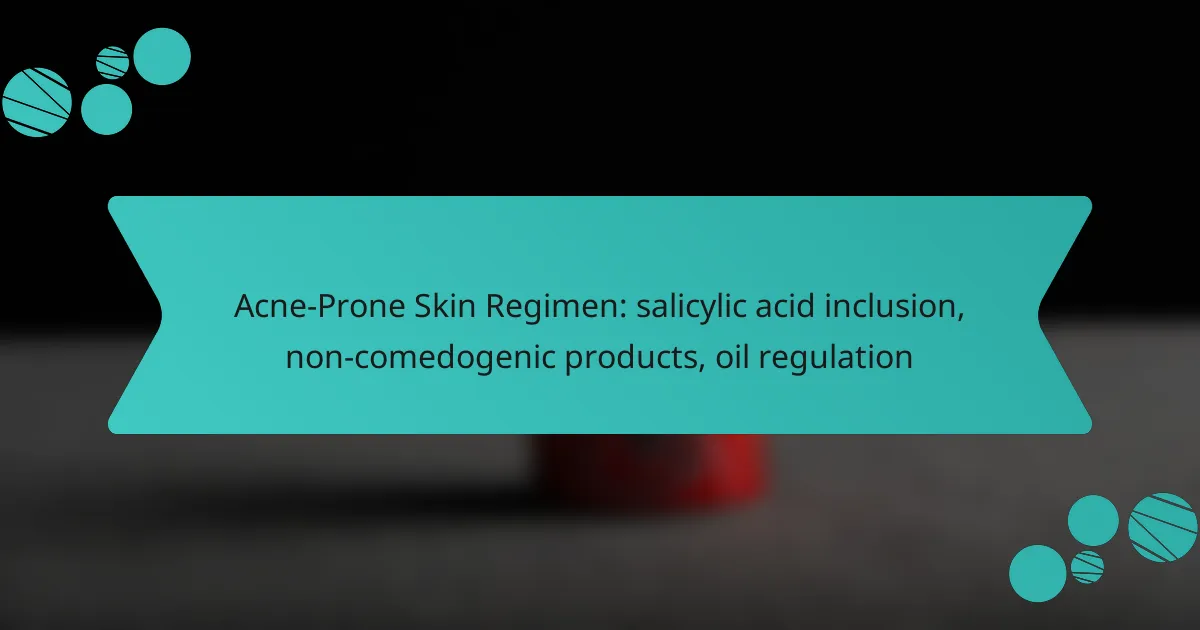For those with acne-prone skin, incorporating salicylic acid into your skincare regimen can be highly effective in unclogging pores and reducing oiliness. It’s essential to choose non-comedogenic products that won’t block pores, helping to prevent breakouts. Additionally, managing oil production is key to maintaining clear skin and minimizing the risk of acne flare-ups.

What are the best salicylic acid products for acne-prone skin in the UK?
The best salicylic acid products for acne-prone skin in the UK effectively unclog pores, reduce oiliness, and prevent breakouts. Look for non-comedogenic formulations that suit your skin type and address specific concerns.
Neutrogena Oil-Free Acne Wash
Neutrogena Oil-Free Acne Wash is a popular choice for those with acne-prone skin. This cleanser contains 2% salicylic acid, which helps to clear breakouts and prevent new ones from forming. Its oil-free formula ensures it won’t clog pores, making it suitable for daily use.
When using this product, apply it to damp skin and massage gently for about 20 seconds before rinsing. It’s effective for removing excess oil and impurities, but be cautious if you have sensitive skin, as it may cause dryness.
La Roche-Posay Effaclar Medicated Gel Cleanser
La Roche-Posay Effaclar Medicated Gel Cleanser is another excellent option for acne-prone skin. This gel cleanser features 2% salicylic acid and is designed to target acne while soothing the skin with thermal spring water. Its gentle formulation is suitable for sensitive skin types.
To maximize its benefits, use it twice daily, applying it to wet skin and rinsing thoroughly. This product not only helps clear existing breakouts but also reduces the likelihood of future acne flare-ups.
Paula’s Choice Skin Perfecting 2% BHA Liquid Exfoliant
Paula’s Choice Skin Perfecting 2% BHA Liquid Exfoliant is a standout product for those looking to incorporate salicylic acid into their regimen. This leave-on exfoliant penetrates deep into pores to dissolve excess oil and dead skin cells, effectively preventing breakouts.
Apply this product after cleansing, using a cotton pad or your fingers. It’s recommended to use it once or twice a day, depending on your skin’s tolerance. Be mindful of using sunscreen during the day, as exfoliating acids can increase sun sensitivity.
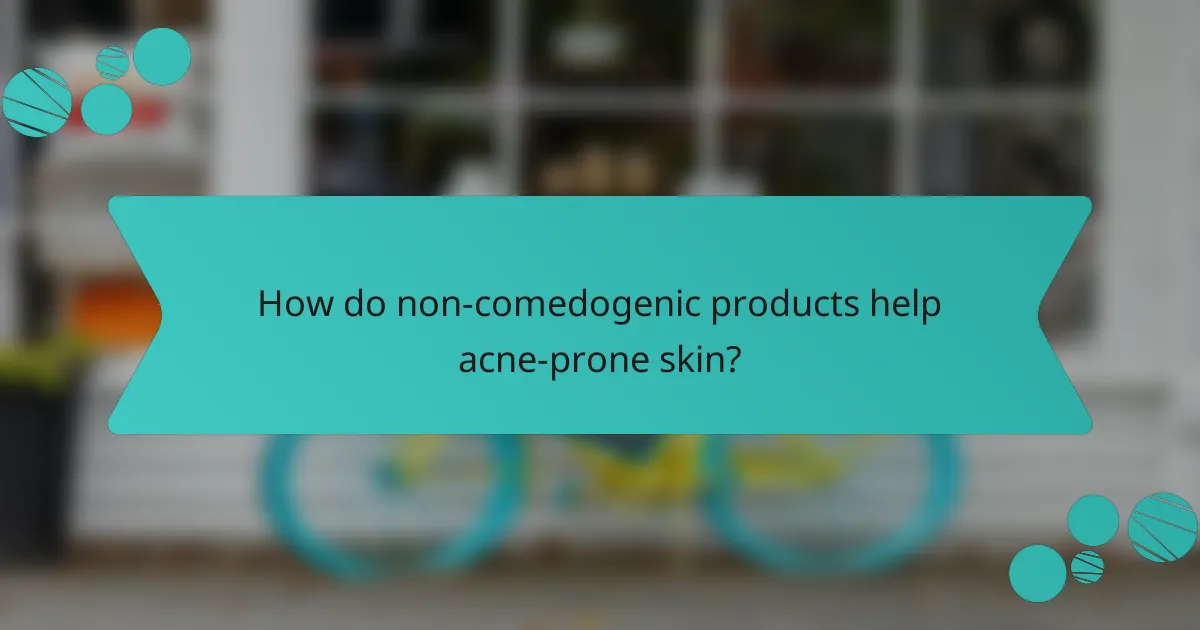
How do non-comedogenic products help acne-prone skin?
Non-comedogenic products are formulated to avoid clogging pores, making them essential for managing acne-prone skin. By using these products, individuals can reduce the likelihood of developing acne and maintain clearer skin.
Prevents pore blockage
Non-comedogenic products are designed to be lightweight and less likely to create a barrier that traps oil and dirt in the pores. Ingredients such as salicylic acid, which is often included in these formulations, help to exfoliate the skin and keep pores clear.
When selecting products, look for labels that explicitly state “non-comedogenic.” This ensures that the ingredients used will not contribute to pore blockage, which is a common trigger for acne flare-ups.
Reduces breakouts
By preventing pore blockage, non-comedogenic products can significantly reduce the frequency and severity of breakouts. Regular use of these products helps to maintain a balanced oil production, which is crucial for acne-prone skin.
Incorporating a routine that includes non-comedogenic moisturizers and sunscreens can further enhance skin health. Aim for products that contain beneficial ingredients like niacinamide or hyaluronic acid, which hydrate the skin without causing breakouts.
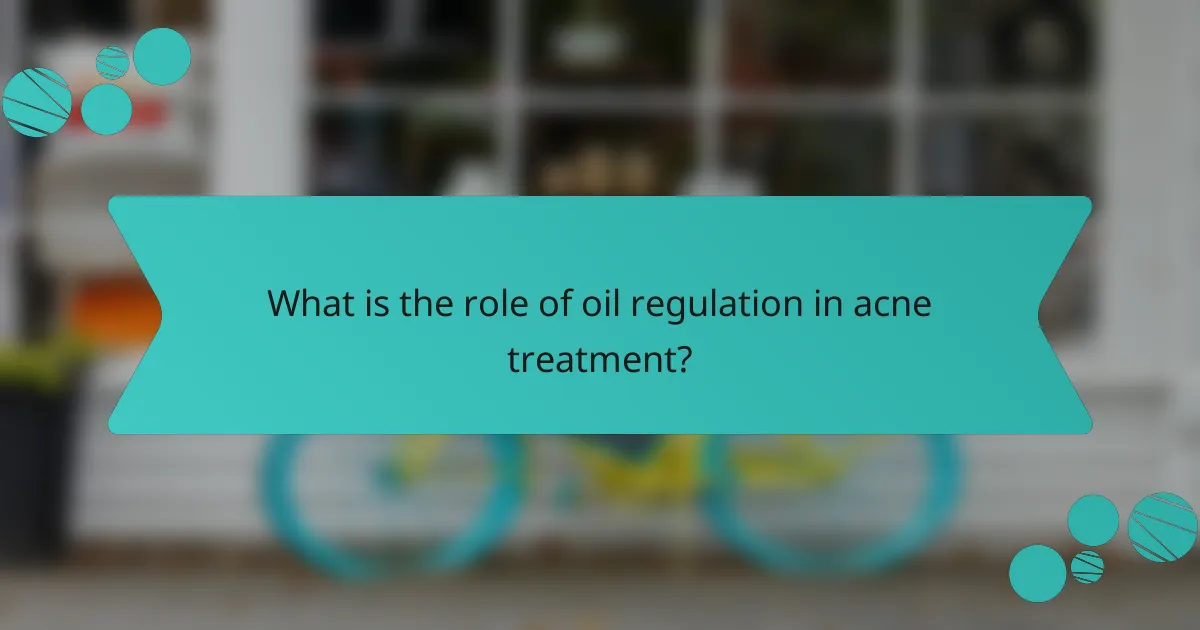
What is the role of oil regulation in acne treatment?
Oil regulation is crucial in acne treatment as it helps control excess sebum production, which can clog pores and lead to breakouts. By managing oil levels, individuals can reduce the likelihood of acne flare-ups and maintain clearer skin.
Minimizes excess sebum production
Regulating oil is essential for minimizing excess sebum production, which is a primary contributor to acne. Products containing salicylic acid are effective as they penetrate the pores, helping to dissolve oil and prevent blockages. Look for non-comedogenic formulations that won’t clog pores while addressing oiliness.
Incorporating ingredients like witch hazel or tea tree oil can also aid in controlling sebum levels. These natural astringents can reduce oiliness without overly drying the skin, making them suitable for daily use.
Promotes balanced skin hydration
While regulating oil, it’s important to maintain balanced skin hydration to prevent over-drying, which can trigger more oil production. Using lightweight, oil-free moisturizers can help keep the skin hydrated without adding excess oil. Look for products that contain hyaluronic acid or glycerin, which attract moisture without clogging pores.
Establishing a routine that includes both oil regulation and hydration is key. Avoid heavy creams or products with alcohol, as they can exacerbate dryness and lead to increased oiliness as the skin compensates.

What are the key ingredients to look for in acne skincare?
Key ingredients for acne-prone skin include salicylic acid, niacinamide, and hyaluronic acid. These components help regulate oil production, reduce inflammation, and maintain skin hydration, making them essential for effective acne treatment.
Salicylic acid
Salicylic acid is a beta hydroxy acid (BHA) known for its ability to penetrate pores and dissolve excess oil and dead skin cells. This action helps prevent clogged pores, which can lead to acne breakouts.
When choosing products with salicylic acid, look for concentrations between 0.5% and 2%. Start with lower concentrations to assess your skin’s tolerance, and gradually increase if needed. Regular use can lead to clearer skin over time.
Niacinamide
Niacinamide, or vitamin B3, is effective in reducing inflammation and redness associated with acne. It also helps regulate sebum production, making it a great option for oily skin types.
Incorporate niacinamide into your routine through serums or moisturizers containing 2% to 10% concentration. This ingredient is generally well-tolerated, but it’s wise to patch test new products to avoid irritation.
Hyaluronic acid
Hyaluronic acid is a powerful humectant that attracts moisture to the skin, helping to keep it hydrated without adding oil. This is particularly beneficial for acne-prone skin, which can become dry from other treatments.
Look for products with hyaluronic acid that contain at least 0.5% concentration. Using this ingredient can help maintain a balanced moisture level, reducing the risk of irritation and promoting overall skin health.
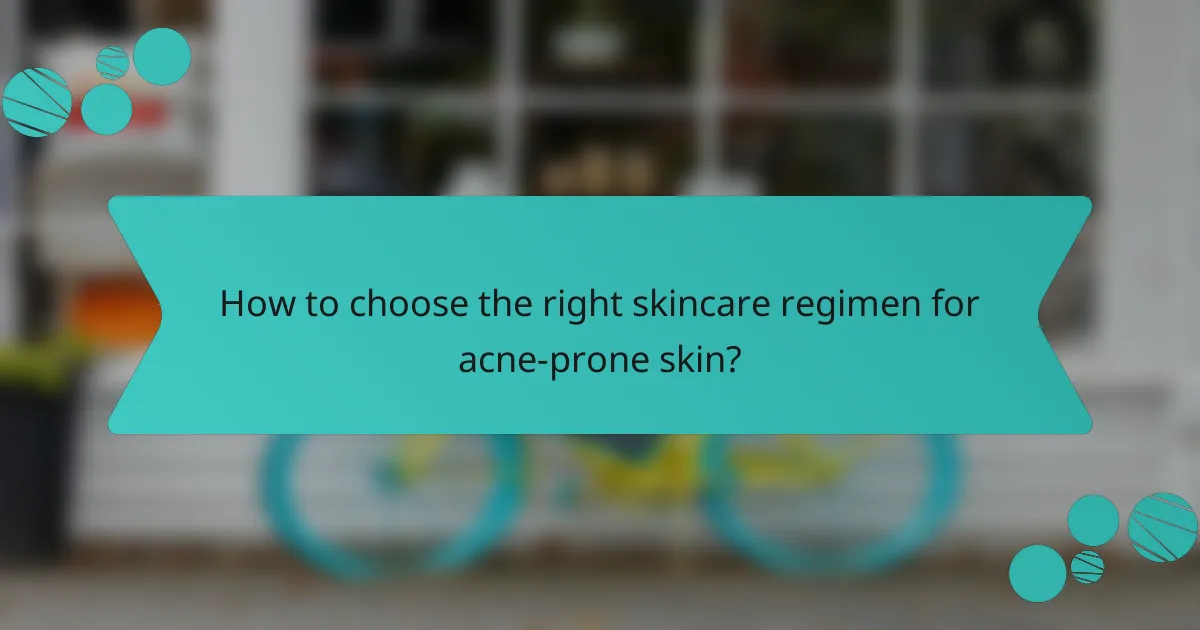
How to choose the right skincare regimen for acne-prone skin?
Choosing the right skincare regimen for acne-prone skin involves selecting products that effectively manage oil production and prevent clogged pores. Look for non-comedogenic products and those containing salicylic acid, which helps to exfoliate and clear acne without causing irritation.
Identify skin type
Understanding your skin type is crucial for selecting the right products. Acne-prone skin can be oily, dry, or combination, and each type requires different care. For instance, oily skin benefits from lightweight, oil-free moisturizers, while dry skin may need richer, hydrating formulas.
To identify your skin type, observe how your skin feels throughout the day. If it appears shiny and feels greasy, you likely have oily skin. If it feels tight or flaky, you may have dry skin. Combination skin exhibits both characteristics, with some areas oily and others dry.
Consult a dermatologist
Consulting a dermatologist is a vital step in developing an effective skincare regimen for acne-prone skin. A dermatologist can assess your skin condition and recommend specific treatments tailored to your needs, including prescription medications if necessary.
During your consultation, be prepared to discuss your skincare history, current products, and any triggers you’ve identified. This information helps the dermatologist create a personalized plan, which may include salicylic acid treatments, topical retinoids, or other targeted therapies.
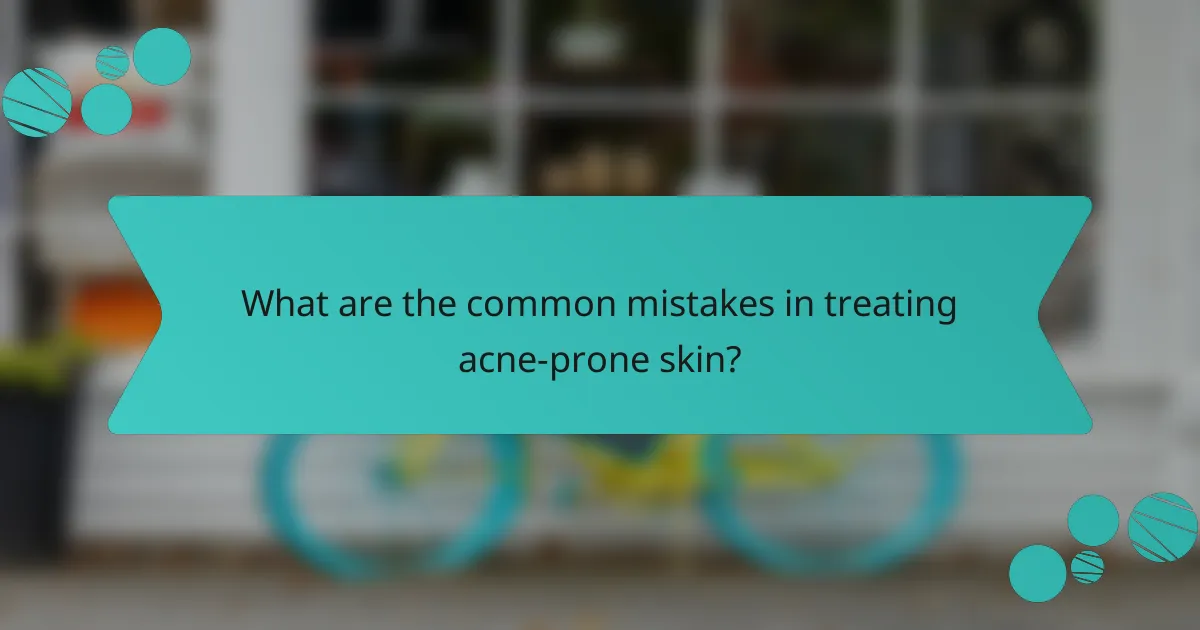
What are the common mistakes in treating acne-prone skin?
Common mistakes in treating acne-prone skin include using harsh products, over-exfoliating, and neglecting to choose non-comedogenic options. These errors can exacerbate breakouts and irritation, making it crucial to adopt a balanced and informed skincare regimen.
Over-exfoliating
Over-exfoliating can strip the skin of its natural oils, leading to increased oil production and more breakouts. This often occurs when individuals use physical scrubs or chemical exfoliants too frequently, thinking it will clear their skin faster.
To avoid over-exfoliation, limit the use of exfoliating products to 1-3 times per week, depending on your skin’s sensitivity. Opt for gentle chemical exfoliants like salicylic acid, which can help unclog pores without causing excessive irritation.
Always pay attention to your skin’s response. If you notice increased redness or dryness, reduce the frequency of exfoliation and consider consulting a dermatologist for personalized advice.
